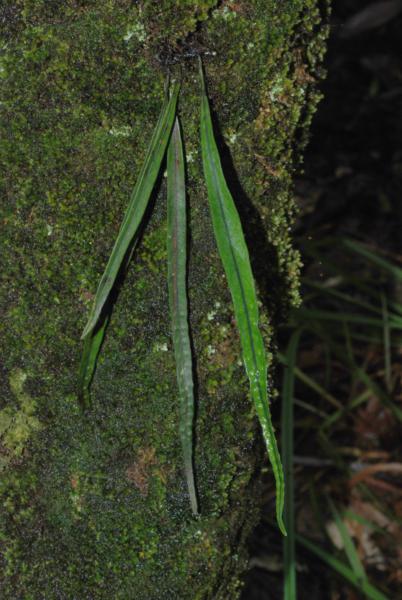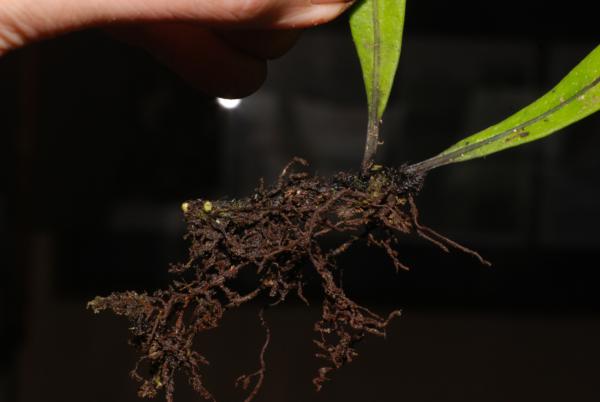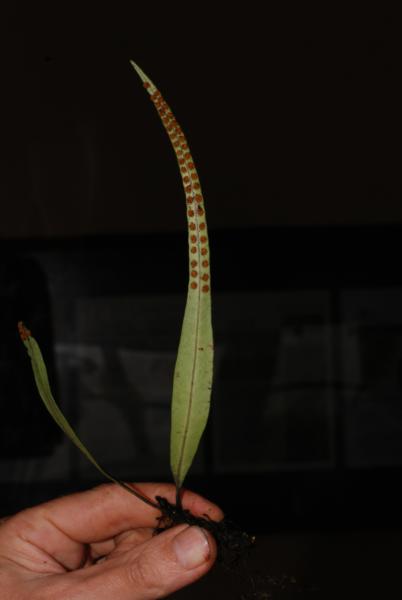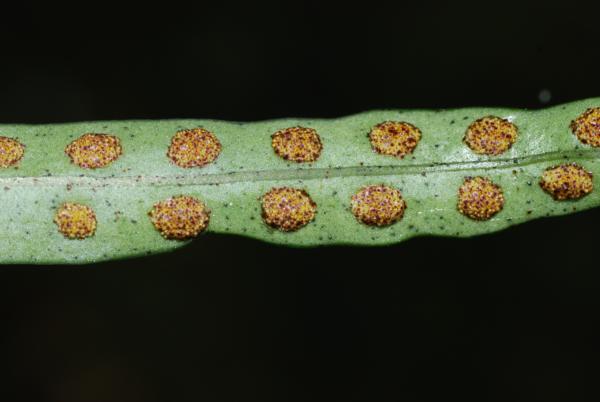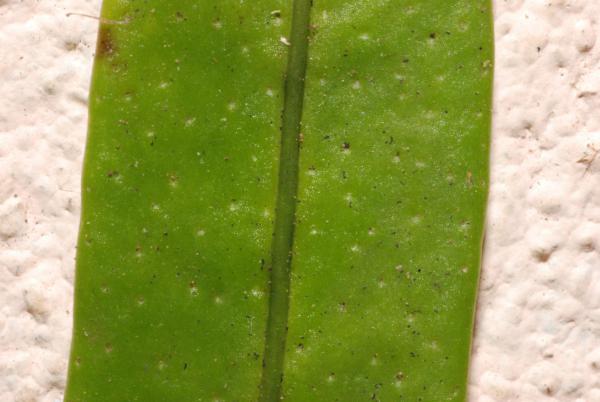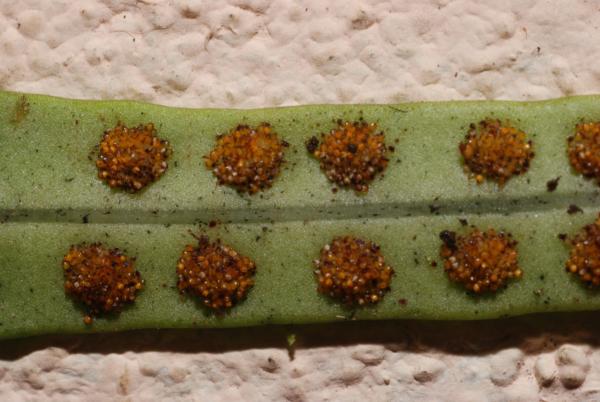
Lepisorus subconfluens Ching
Family
Polypodiaceae
Nomenclature
Lepisorus subconfluens Ching, Bull. Fan Mem. Inst. Biol. 4: 85. 1933; Bir & Trikha, Amer. Fern J. 64: 60. 1974; Tagawa & K.Iwats., Fl. Thailand 3: 514, f. 51.2. 1989; Boonkerd & Pollawatn, Pterid. Thailand: 275. 2000. – Pleopeltis subconfluens (Ching) Tagawa & K.Iwats., Acta Phytotax. Geobot. 22: 100. 1967; Tagawa & K.Iwats., SouthE. Asian Stud. 5: 49. 1967.
Polypodium lineare auct. non Thunb.: C.Chr., Contr. U.S. Natl. Herb. 26. 334. 1931.
Description
Rhizome creeping, about 2.5 mm diam., bearing fronds rather closely spaced near apex, scaly; scales oblong-subtriangular with round base and long-attenuate apex, up to 3 by 1 mm, sharply toothed at margin, dark brown to nearly black, the basal marginal portion brown and more or less clathrate. Stipes up to 3 cm long, indistinct from the base of laminae, scaly at base, dark stramineous to nearly black. Laminae linear, up to 30 by 1.2 cm, commonly about 20 by 0.8 cm, attenuate towards both ends; leathery. Sori medial, round to elliptic, about 2.5 mm broad, up to 5 mm long, sometimes fusing to the next ones; the sterile portion of laminae usually revolute, in contrast to the remaining soriferous portion. Spores monolete .
Distribution in Thailand
NORTHERN: Chiang Mai, Chiang Rai, Phitsanulok.
Wider Distribution
Bhutan and SW China (Yunnan).
Ecology
On mossy tree trunks in dense evergreen forests at high altitudes.
Similar species
Lepisorus contortus (Christ) Ching, Lepisorus heterolepis (Rosenst.) Ching.
Proposed IUCN Conservation Assessment
Least Concern (LC). This species is widespread and not under any known threat.
Notes
Further taxonomic work is necessary to distinguish Lepisorus contortus (Christ) Ching, Lepisorus heterolepis (Rosenst.) Ching and Lepisorus subconfluens Ching.
Voucher specimens - Thailand
Middleton et al. 4872, Chiang Mai, Doi Suthep (E); Middleton et al 5058, Chiang Mai, Doi Pha Hom Pok National Park (E); Middleton et al. 5098, Phitsanulok, Phu Hin Rong Kla National Park (E).
Habit
Rhizome and stipe bases
Frond from beneath
Lower surface of frond with sori
Lower surface of frond
Sori
Site hosted by the Royal Botanic Garden Edinburgh. Content managed by Stuart Lindsay, Gardens by the Bay, Singapore and David Middleton, Singapore Botanic Gardens. Last updated 24 January 2012
